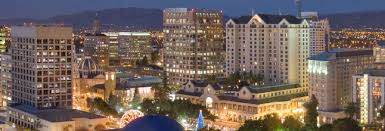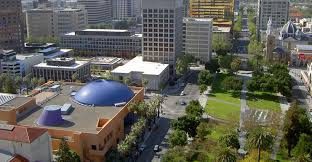Five years from now, San Jose’s skyline will look markedly different.
The city, with a population of just over 1 million people today, is booming with development. Many of those projects are not small endeavors, but tall, glassy, upscale towers that will bring new residents, office space and retail options.
Among the developments shaping the San Jose skyline is Silvery Towers at 180 W. St. James St., a glimmering 640-unit luxury condominium development with 30,000 square feet of retail space in two towers rising 228 feet tall. About a half mile away, the proposed Greyhound Station development would include two 23-story towers with 708 residential units and ground floor commercial space.
And in one of the biggest developments in San Jose’s history, Trammell Crow is planning more than 1 million square feet of office and retail space under 325 residential units at 402 W. Santa Clara St., adjacent to Diridon Transit Station, which is slated to see high-speed trains come through by 2025.
Some, in recent months, have speculated that San Jose may be going through a renaissance — a true turning point for the city.
Chris Freise, a partner with San Francisco-based Lift Partners, is one of those who sees a shifting tide in San Jose. Freise is in the process of gutting and putting back together the historic building at 1 W. Santa Clara St. in San Jose’s downtown district. His is one of several old buildings in the area currently grabbing developers’ attention.
Across the street, San Francisco-based DivcoWest is renovating the historic building at 1 W. Santa Clara St., to make room for smaller, creative firms after the building for years has sat partially vacant.
Those projects are a part of a larger shift happening in San Jose, specifically in and around the downtown area, Freise said in an interview earlier this year.
“Downtown has got this great revitalization, or kind of urban renaissance happening, and the buildings in the historic district are a big part of why it is happening,” he said.
Older, authentic buildings have a way of drawing startups and tech companies, and that San Jose has a collection of the very few that exist south of San Francisco, Freise said.
It’s not the first time someone has suggested that San Jose, known as the capitol of Silicon Valley, may be on the verge of blossoming bigger. But this time, could they be right?
Crane Watch is starting with a focus first in the 176 square miles of San Jose. We’ll be logging and updating the status of the city’s projects that are 100,000 square feet in size or larger. In the coming months, we’ll expand the tracker to include other Santa Clara County cities.


